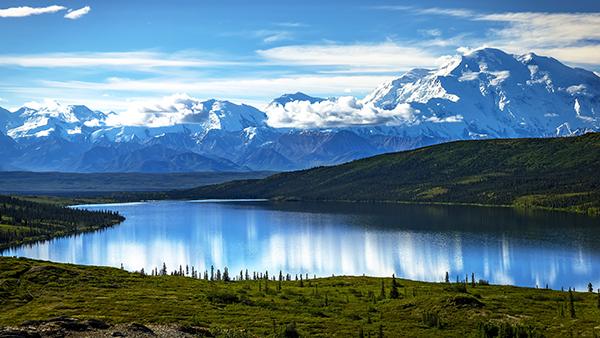
A view of Wonder Lake and Denali during a daily Camp Denali foray, Denali National Park and Preserve / Rebecca Latson.
Let's say you, the photographer, want to take a trip to a national park like Denali National Park and Preserve ' someplace that limits vehicular activity into the far reaches of the park. If you read my 2014 article about Denali National Park, you will know that, unless you:
- take an organized photo tour or
- you've won the park's road lottery or
- you have a special photography permit to drive through the park for a certain number of days or
- you've been chosen as the park's Artist-In-Residence,
getting in and staying in for your photography might be problematic (but certainly not impossible). Trust me when I say you will want to stay within this park as long as you possibly can, because Denali is a stunningly beautiful location enticing the photographer to stay as long as possible.
That's where a place like Camp Denali comes into the picture ... quite literally.
In 2014, I paid for a week-long photo tour to Lake Clark National Park and Preserve. I wanted to spend 2 weeks in Alaska, though, so I considered joining another organized photo tour that spent a week in Denali at a place called North Face Lodge. Unfortunately, the date was not the right time for me and I realized I wouldn't have had the money for the tour itself, anyway. After reviewing the North Face Lodge's website, however, I figured I did have the money for a stay of 4 nights and could tack that on either before or after my Lake Clark tour. I called the lodge only to discover it was booked solid for those dates. They recommended I contact their sister lodging: Camp Denali, just up the hill from the North Face Lodge.
What is Camp Denali?
When I think of the word 'camp', I tend to picture tents. Camp Denali is definitely not tents. Built in 1954, the 'camp' consists of several administrative/ops buildings, the main Potlatch building where meals are served and meetings held, a smaller lodge for meetings and relaxing, a small gift store-equipment room and a series of cabins of varying sizes for 1 or more guests. Each cabin is rustic and beautifully decorated with a hand-made quilt, propane lamps, a wood stove and a heater to make hot water for tea, coffee or hot chocolate. Water comes from a shared spigot outside of the cabin, and each cabin has its own extremely-clean outhouse located a short path away. A larger building connected to the gift shop accommodates mens' and ladies' showers and flush toilets. The cabins have no electricity, so smartphones, laptops, tablets, camera batteries, etc. can be charged in the natural history resource room. All of these non-residential buildings are just up the gravel road from the guest cabins. Every cabin has a clear view of Denali and on the mornings when the mountain is out, it's an unbelievable sight.
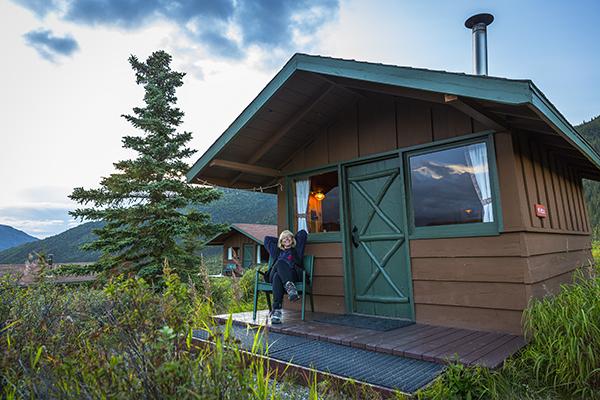
The photographer relaxing at her Camp Denali cabin, Denali National Park and Preserve / Rebecca Latson.
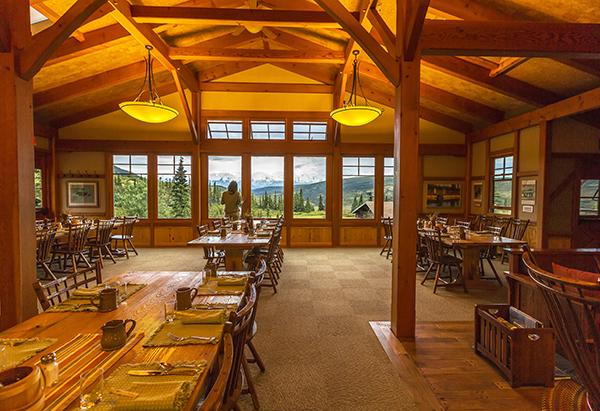
On the inside looking out from Camp Denali's Potlatch Building, Denali National Park and Preserve / Rebecca Latson.
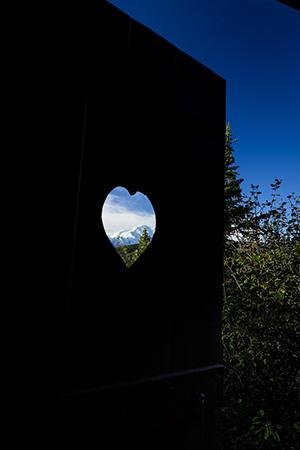
The view of Denali from my little outhouse at Camp Denali, Denali National Park and Preserve / Rebecca Latson.
Here's where the photography part comes into play. Camp Denali offers three different daily hikes ranging from strenuous to easy-paced 'forays'. With 'Becky-sized' 40-Mile Cabin as my base for 4-1/2 days, I toted cameras and tripod with me during the daily forays. I felt like I was getting my cake and eating it too. Our foray leaders provided a wealth of historical, ecological, biological and geological information. I enjoyed the conversations with other members of each walk, and the forays were slow enough in nature that I was able to plunk down tripod and camera for some awesome photography.
I might not have been able to go everywhere I wished (I so wanted to get back to Polychrome Pass), but aside from that, I had a wonderful stay at Camp Denali, met some really neat people and I definitely got a photographic feel for this amazing national park just from the daily group forays (which I needed after enjoying the camp's fantastic cooking). Staying at this place also meant I was able to remain within the park for longer than just one day and as you can see from this post, I was even able to tell a story about my stay at Camp Denali from the photos I took. Landscape, wildlife, interior shots plus storytelling ' hey, I managed to combine several previous articles'-worth of suggestions into a single stay!
So, the moral of this story is (and I'm pretty sure you already know the moral of this story): if you want to stay in a remote national park that may not allow you to use your vehicle as your photographic base, then check out other options offered and see if you can't comfortably combine an option with your camera and tripod like I did staying at Camp Denali.
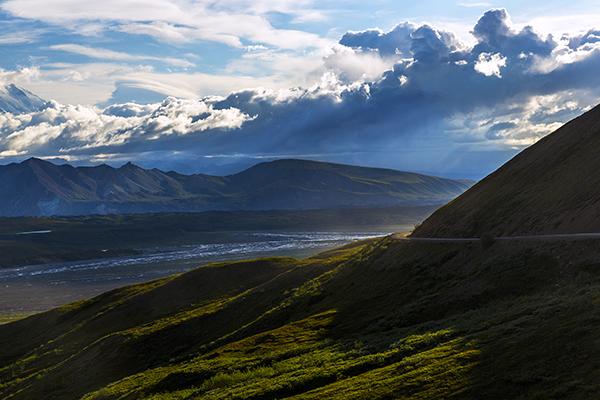



Comments
Y'know, Rebecca, you're just torturing those of us who probably will never be able to visit Denali . . . . .
That's just awful.
But the photos are great.